You’re in luck if you love lettuce and gardening when it’s hot outside. While the leafy green generally prefers cooler temperatures from 55 to 65 degrees Fahrenheit, there are heat tolerant lettuce varieties. The vegetable is quite adaptable.
Heat tolerant lettuce varieties include Red Cross, Nevada, Merlot, Jericho, Oakleaf, Australian Yellow, and Year-round Bronze Oakleaf. To help them thrive, start them inside and transplant them outside during the summer. The varieties won’t start growing when the soil temperature is 80+ degrees.
Overall, it usually is not enough to simply plant a heat-tolerant variety. You must germinate seeds away from heat, and once lettuce is transplanted, provide plenty of shade and water. Organic mulch lets the lettuce retain soil moisture, too.
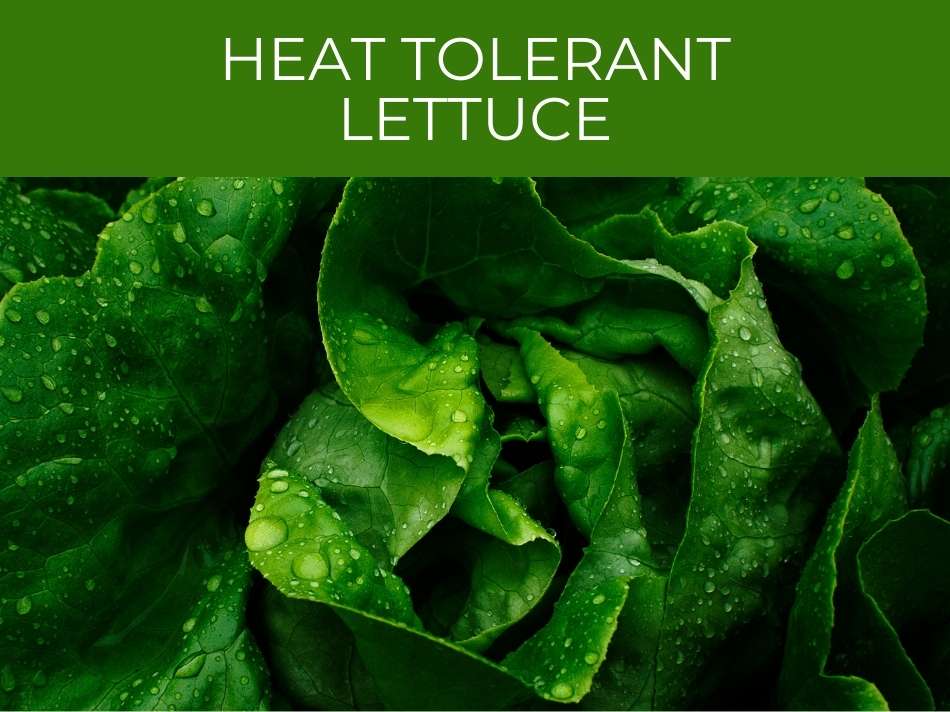
Heat Tolerant Lettuce
Lettuce usually isn’t what gardeners think of when they contemplate plants that thrive in the heat.
However, some lettuce varieties are heat tolerant. They can tolerate temperatures of 85 degrees or even higher and grow in them after being transplanted outside. Fortunately, the ability of lettuce varieties to withstand both cold and heat varies considerably.
That is good since it means people in warmer climates can grow lettuce to their heart’s content.
If you live in a cooler climate, you should do just fine with most lettuce varieties.
The best temperature germination range for lettuce seeds is 70 to 75 degrees.
It can germinate in temperatures as low as 35 degrees, though.
Whatever you do with your heat-resistant varieties, be careful not to start growing them outside right away, especially if the soil temperature is already high.
Lettuce seeds won’t sprout in soil that is about 80 degrees.
Safeguard your lettuce plants against transplant shock.
Before you transplant the plants from inside to outside, give them plenty of time outside for about seven to 10 days.
Being outside gives them the opportunity to better adjust to weather conditions once they are outside full time.
Water the plants as completely as possible the day before you pull them so any root damage is minimal.
Don’t get discouraged if your attempts to grow heat-tolerant lettuce fail somewhat (or completely) at first.
Gardeners at the Fair Oaks Horticulture Center in Fair Oaks, CA, tried quite a few varieties in the summer heat, and not all attempts proved successful.
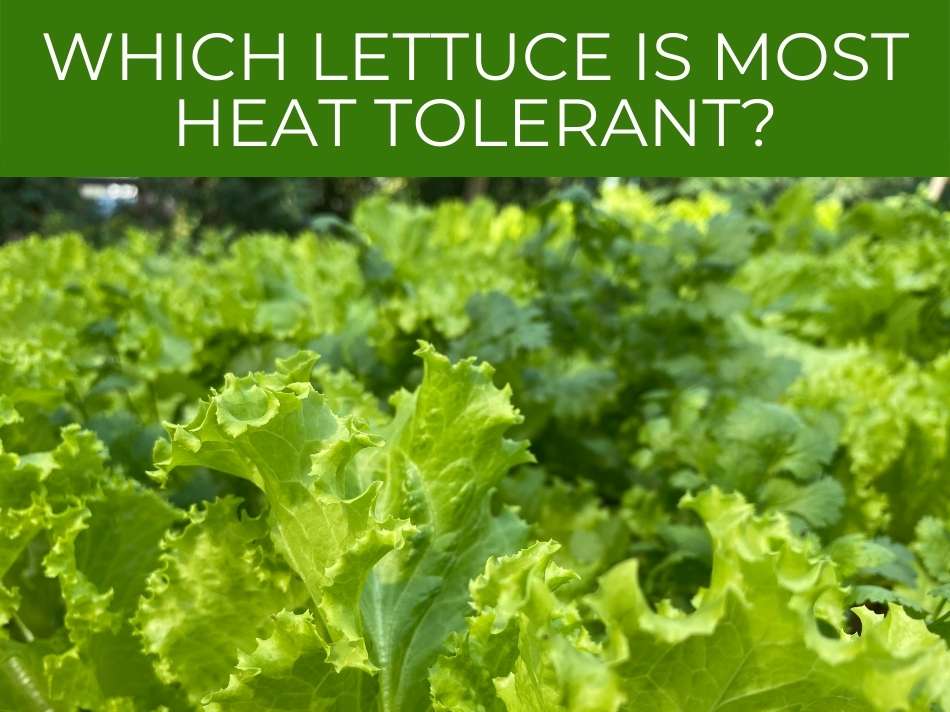
Which Lettuce Is Most Heat Tolerant?
Trials in Fair Oaks, CA, show that these lettuce varieties are the most heat tolerant: Red Cross, Nevada, Merlot, Jericho, Australian Yellow, Paradai, and Year-round Bronze Oakleaf. Nevada is a Batavian summer lettuce, while Merlot results in a head of ruffled red leaves. Jericho hails from Israel.
These experiments occurred over two summers, 2015 and 2016.
It’s interesting to compare the differences between the two summers.
Take the Paradi variety.
In 2015, it bolted during a week of 107-degree heat 28 days after transplant.
The next summer, it bolted more than 60 days after transplantation and grew dense heads of ruffled red leaves.
The second summer was successful while the first was not, so, really, don’t lose heart if your first summer with heat-tolerant lettuce does not go as you hoped.
The Year-round Bronze Oakleaf variety did well both summers.
In 2015, the time from transplant to bolting was more than 40 days, and it had not bolted by the time of removal.
In 2016, the number of days from Year-round Bronze Oakleaf transplantation to bolting was 43.
The gardeners followed best practices such as using shade cloth and planting the lettuce on the shady sides of taller vegetables.
They watered the lettuce plenty to prevent wilting, early bolting, and bitterness.
They also used organic soil mulch and cut and come again harvesting.
Other techniques included using transplants for successive plantings to replace spent plants.
They inspected plants often for signs of insects and diseases and removed bugs and leaves/plants that posed risks.
See our guide for how much sun lettuce needs.
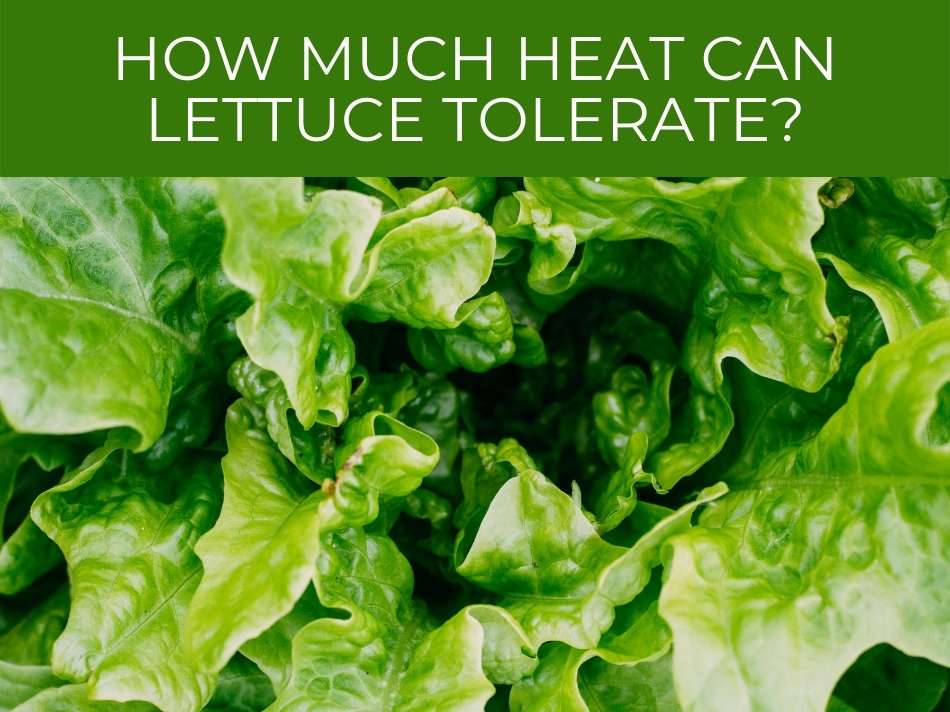
How Much Heat Can Lettuce Tolerate?
Lettuce can deal with a few 85-degree days as long as they don’t become a habit and the nights are cool.
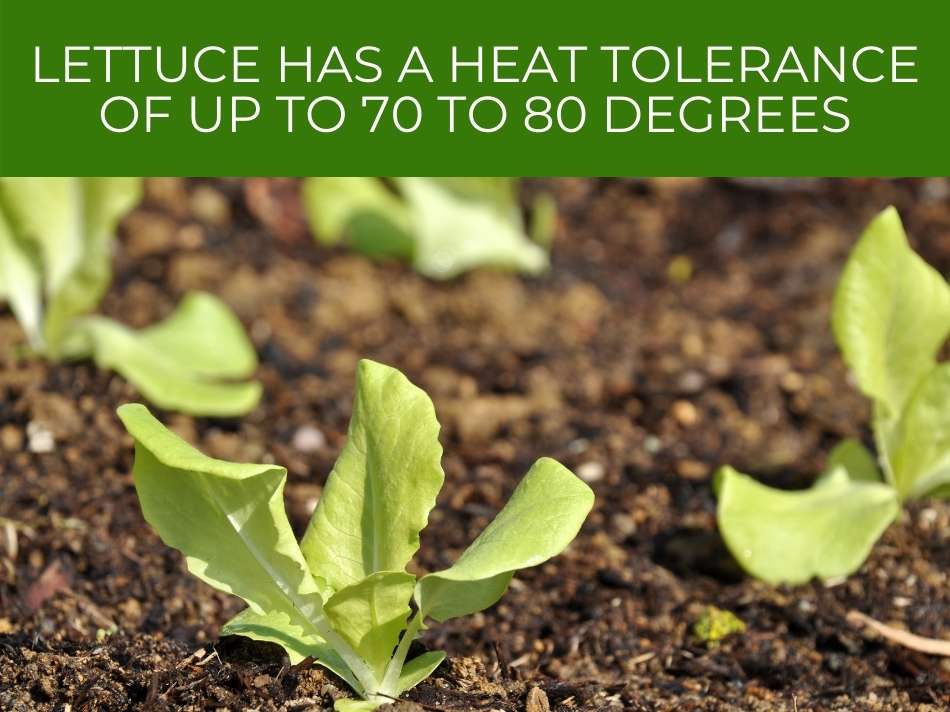
In general, lettuce has a heat tolerance of up to 70 to 80 degrees. The vegetable tends to grow best in temperatures from 45 to 70 degrees, but heat-tolerant varieties such as Year-round Bronze Oakleaf can grow in temperatures much higher, even as high as 107 degrees.
Of course, the steps gardeners take to care for their lettuce and help them thrive play a big role in lettuce heat tolerance.
For instance, if lettuce plants do not get enough shade and water, they are unlikely to grow in the heat even if they are heat-resistant.
All that said, there is no denying that lettuce is a cool-weather crop that has more cold tolerance than heat tolerance.
Its cold tolerance is not unlimited, though.
The leaves can die in freezes (droughts, too).
You may notice a strong, bitter flavor from the lettuce you grow in the summer.
If that’s not your favorite taste (it isn’t for many folks!), then put the lettuce in a plastic bag and keep it in the refrigerator for a few days.
The taste should improve.
Lettuce root systems are shallow and spindly.
Water and fertilize the plants regularly.
Overwatering can be a concern since these plants are so thirsty.
However, it is less of an issue in the heat of summer when temperatures reach into the 90s or even 100s.
See our guide on lettuce surviving frosts and winter.
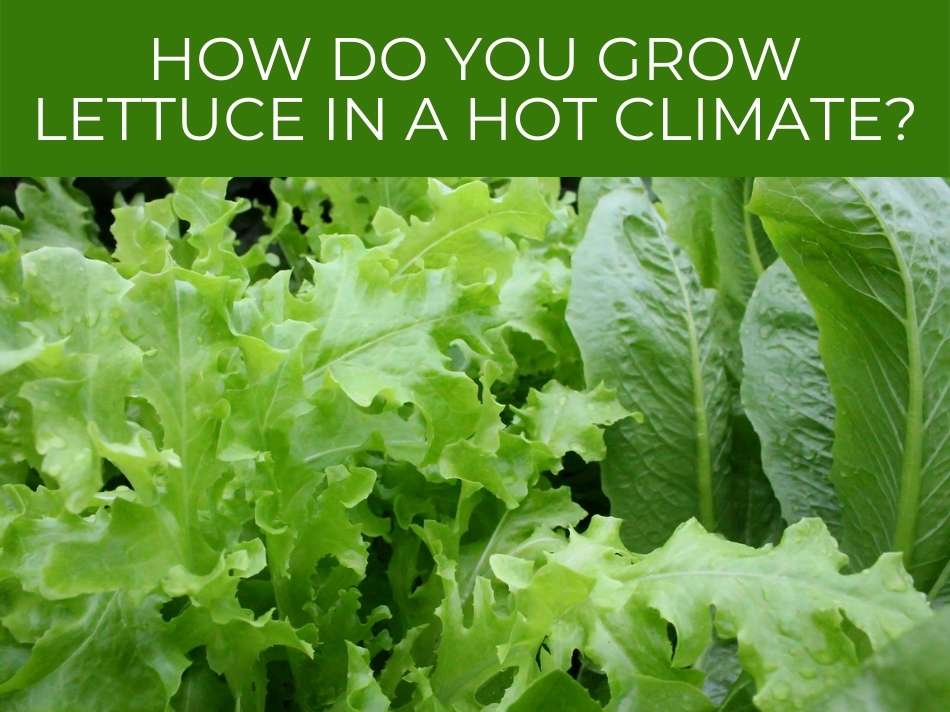
How Do You Grow Lettuce in a Hot Climate?
Growing lettuce in a hot climate requires several approaches at the same time. One is to use a variety such as Year-round Bronze Oakleaf or Jericho that tolerates heat well. Start growing the plants inside, especially if the soil temperature is 80 degrees or higher.
Once they have begun growing well and are almost ready for transplanting, figure out the space where they will go outside.
It should have plenty of shade, or you can use cloth shade.
Water the plants thoroughly the day before you transplant so they are easy to pull out with as little root damage as possible.
After transplantation, water your lettuce plants regularly, and keep soil moisture high with organic mulch.
Always keep an eye out for harmful bugs and diseases.
Harvest outer leaves, replace spent plants with successive plantings, and keep soil nitrogen plentiful.
That encourages growth.
For cut and come again harvesting, you take leaves often and when you need them instead of harvesting as a whole head.
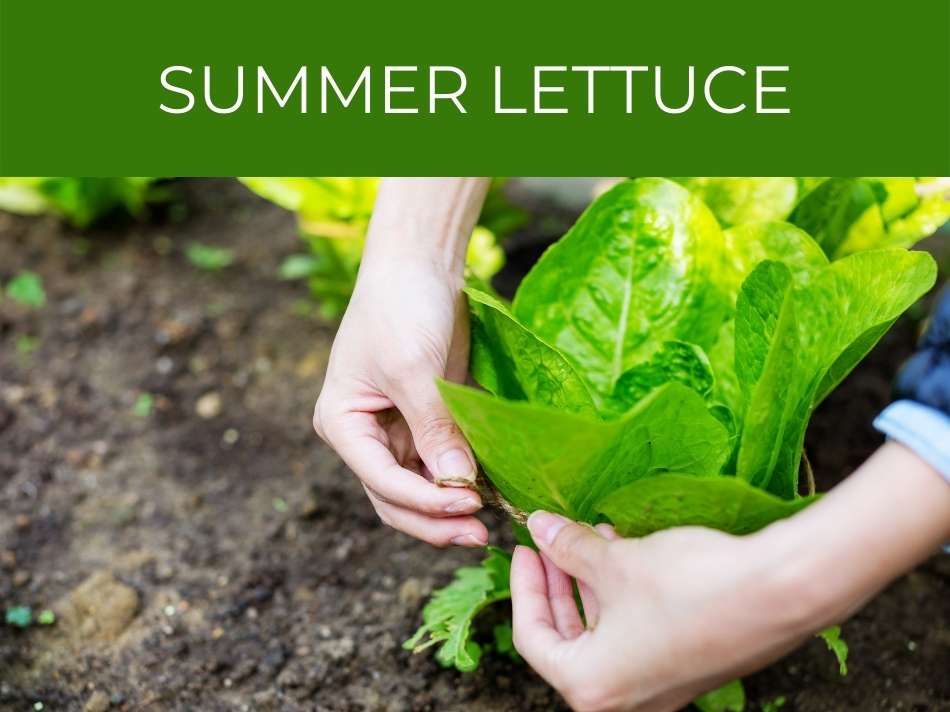
Summer Lettuce
Summer lettuce is possible!
Sure, lettuce is known as a cool-weather plant.
Hardened lettuce plants can even survive temperatures of 20 degrees.
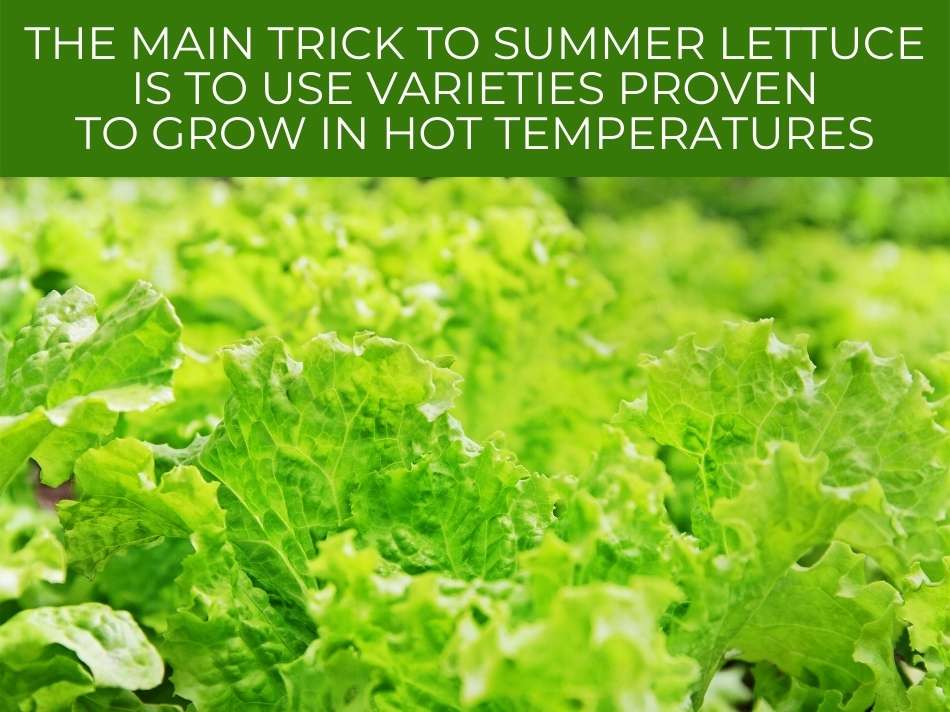
The main trick to summer lettuce is to use varieties proven to grow in hot temperatures. Red Cross, Nevada, Merlot, Jericho, Australian Yellow, Paradai, and Year-round Bronze Oakleaf are among the types that should serve you well. Another trick is using shade, which sometimes will be cloth shade.
A shade of 60 percent should do.
Read our guide for more info on the percentage of shade cloth you should use. The guide covers a variety of plants, not just lettuce.
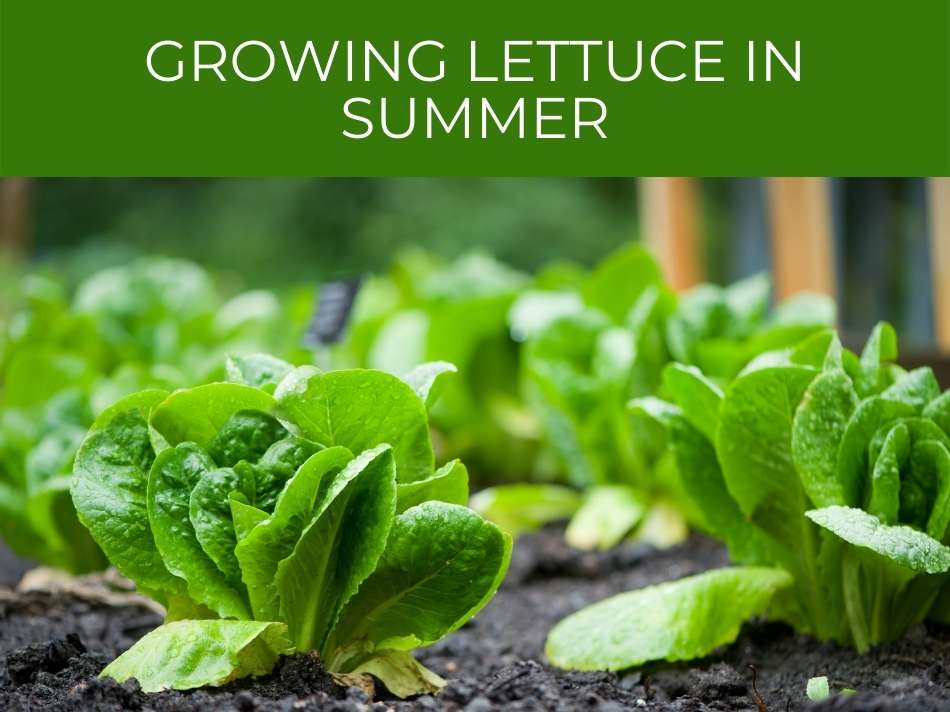
Growing Lettuce in Summer
Many, if not most, home gardeners who grow lettuce focus on it during spring to early summer.
Then they switch to other vegetables, perhaps returning to lettuce in the fall.
That makes sense since lettuce is generally a cooler-weather plant.
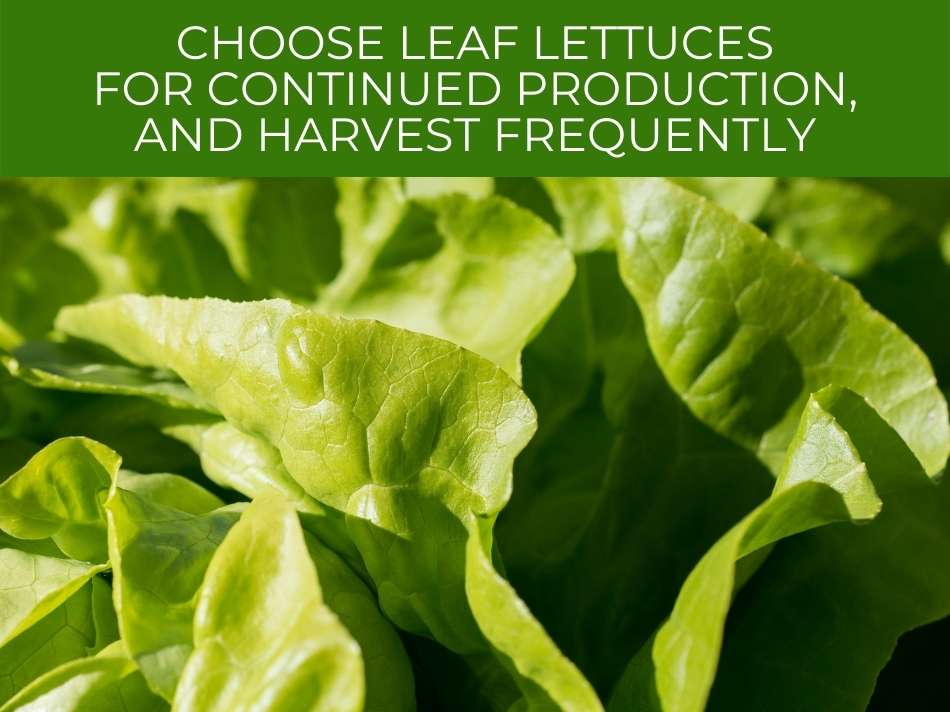
Choose leaf lettuces for continued production, and harvest frequently. Plant your lettuce among corn, cucumbers, squash, and tomatoes for good shade, or use cloth shade. Water often! You can try a heat-resistant variety if you’d like lettuce during the summer’s hottest days.
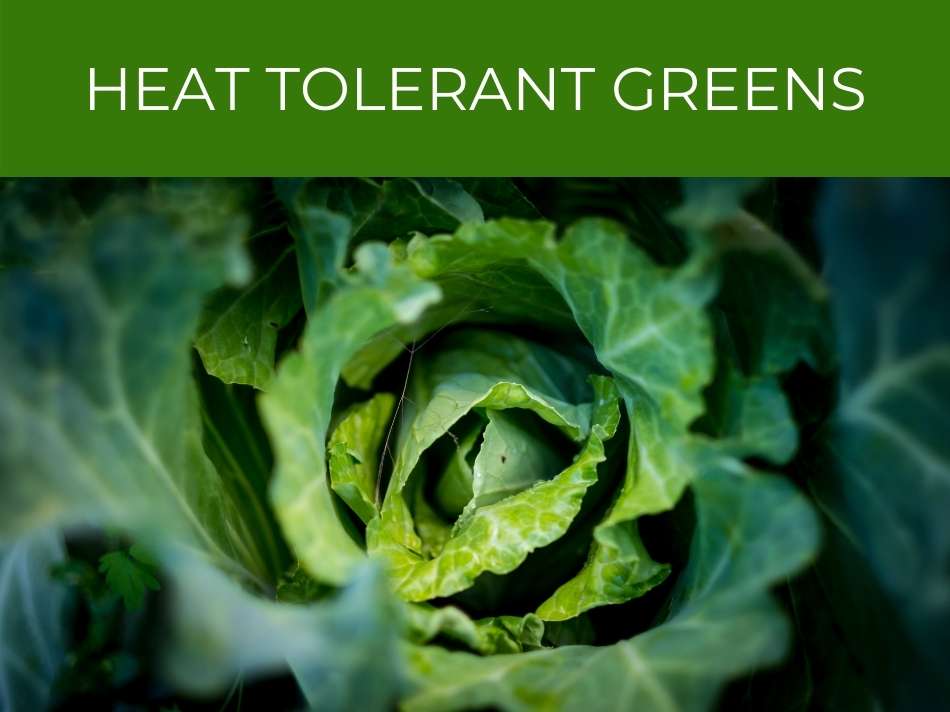
Heat Tolerant Greens
Heat tolerant greens include Jericho romaine lettuce, which was developed to cope with Israeli desert heat.
It stays sweet even when other types go bitter and has tip-burn resistance.
Other greens to try in the heat of summer include Red Malabar summer spinach and Green Glaze collards.


